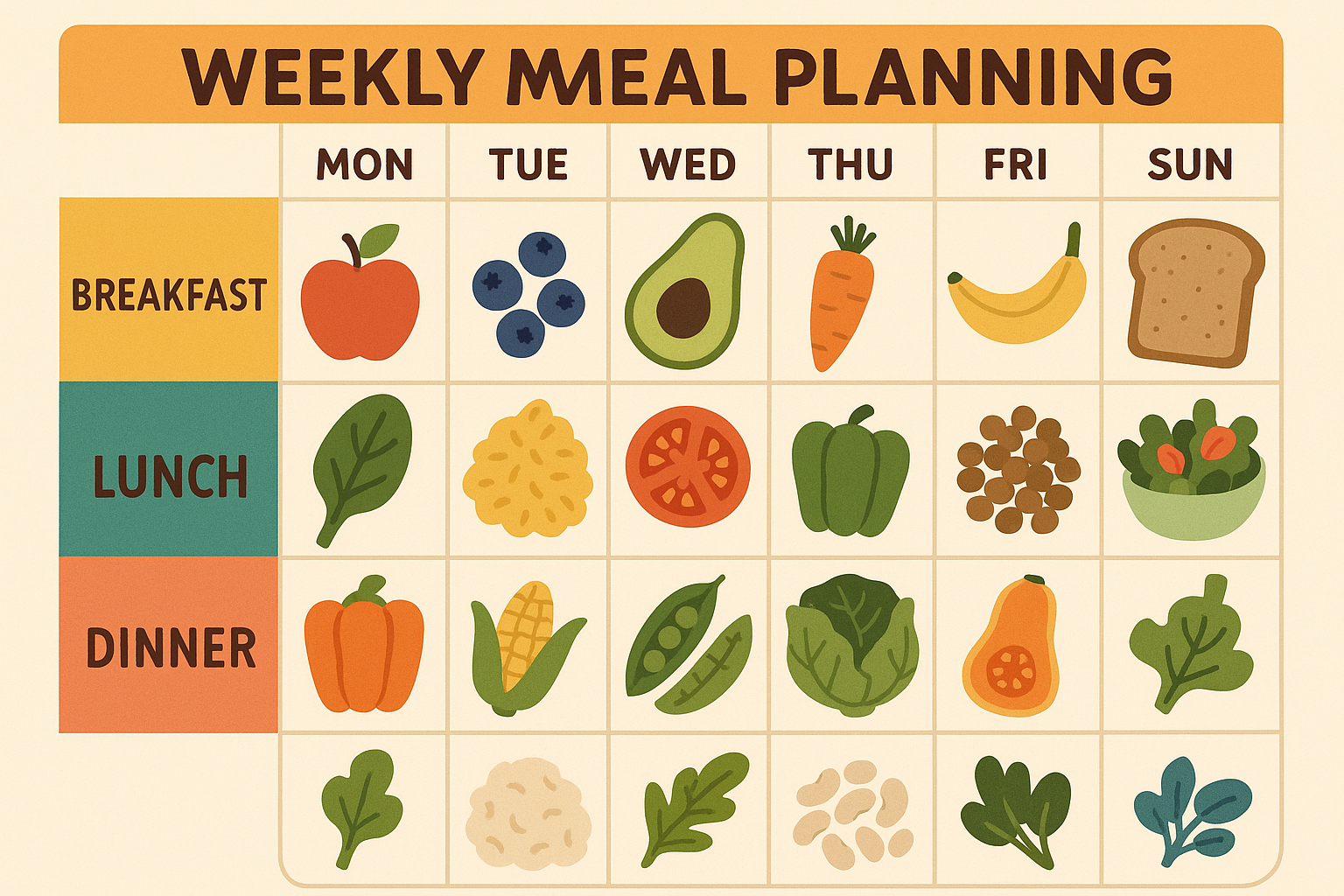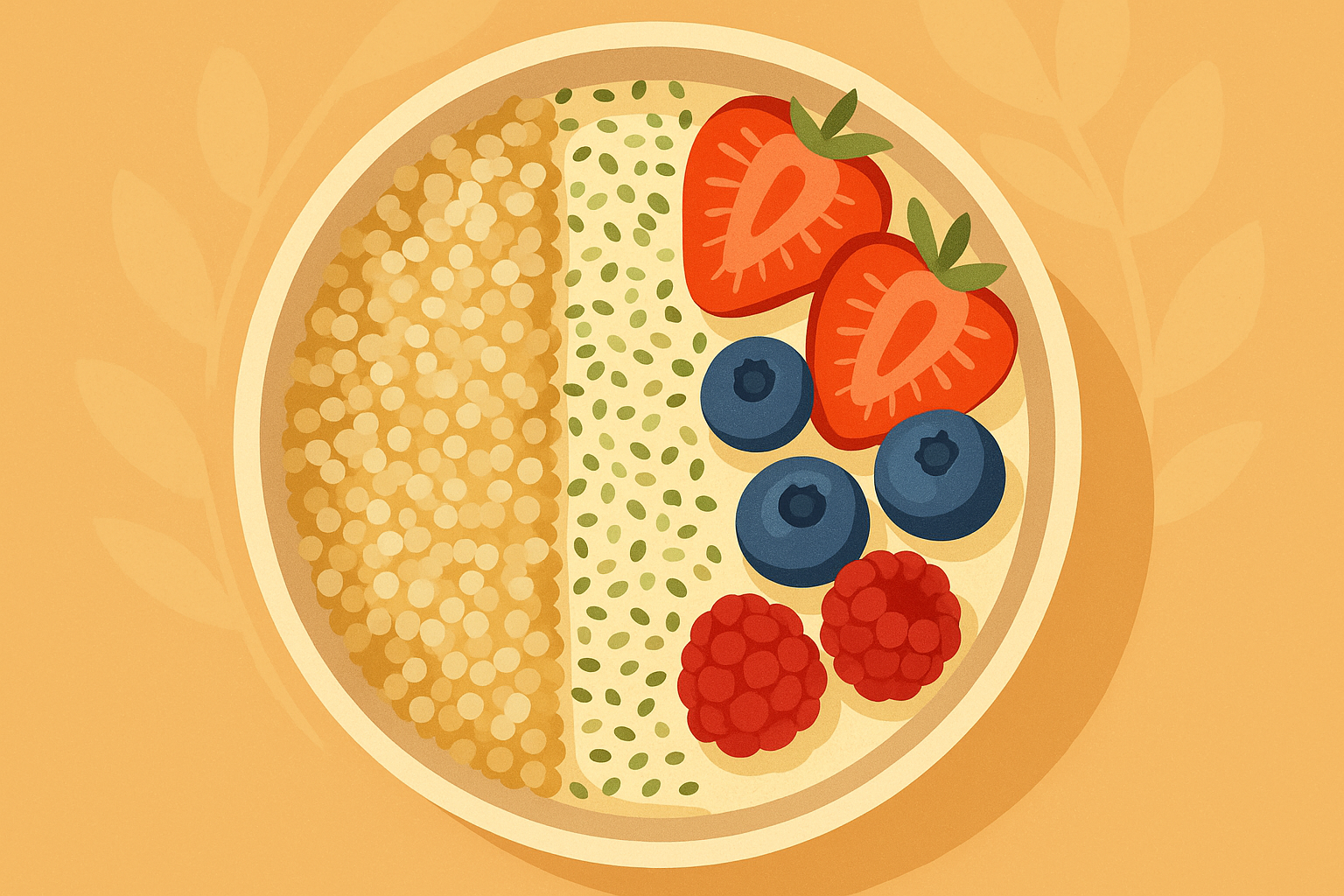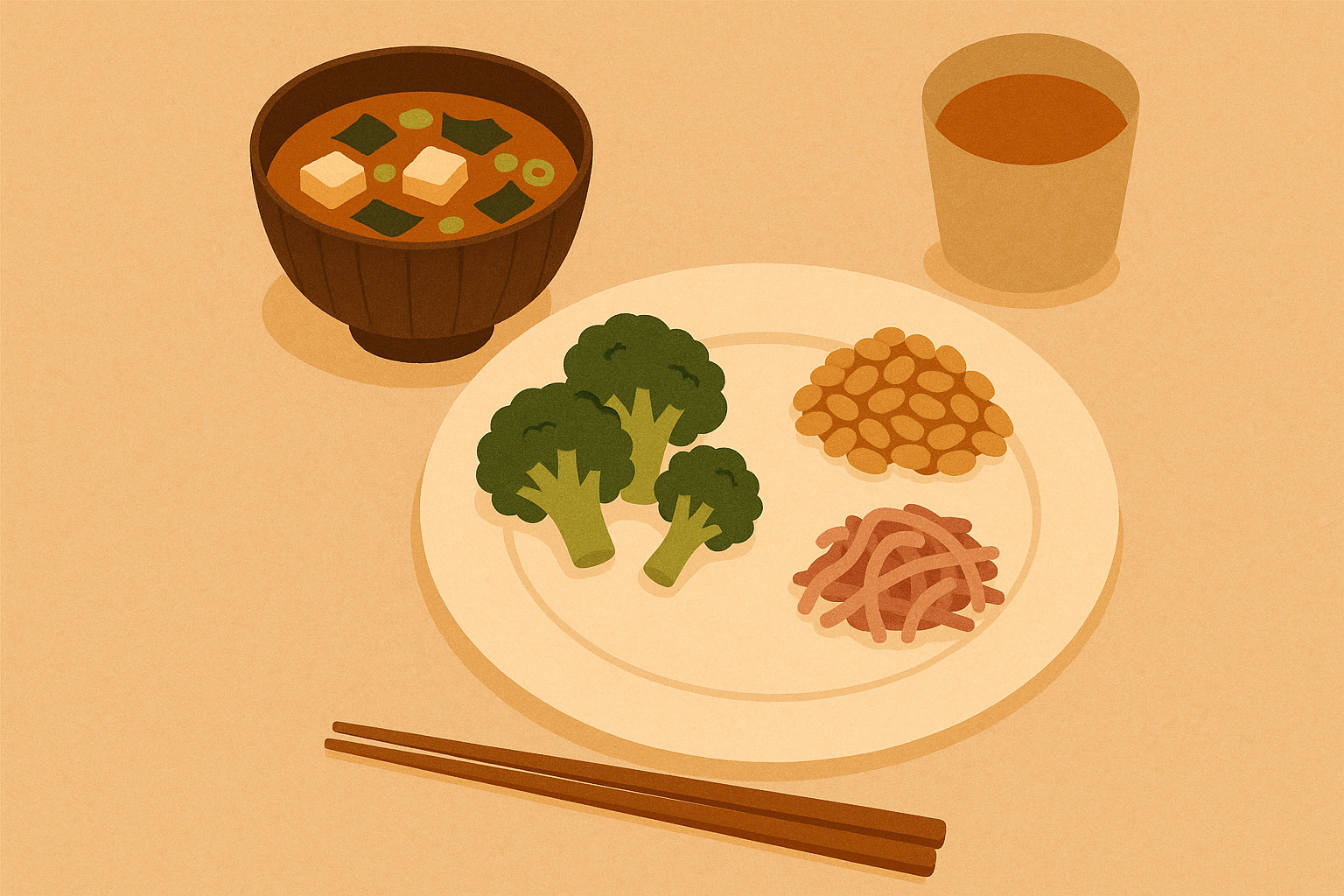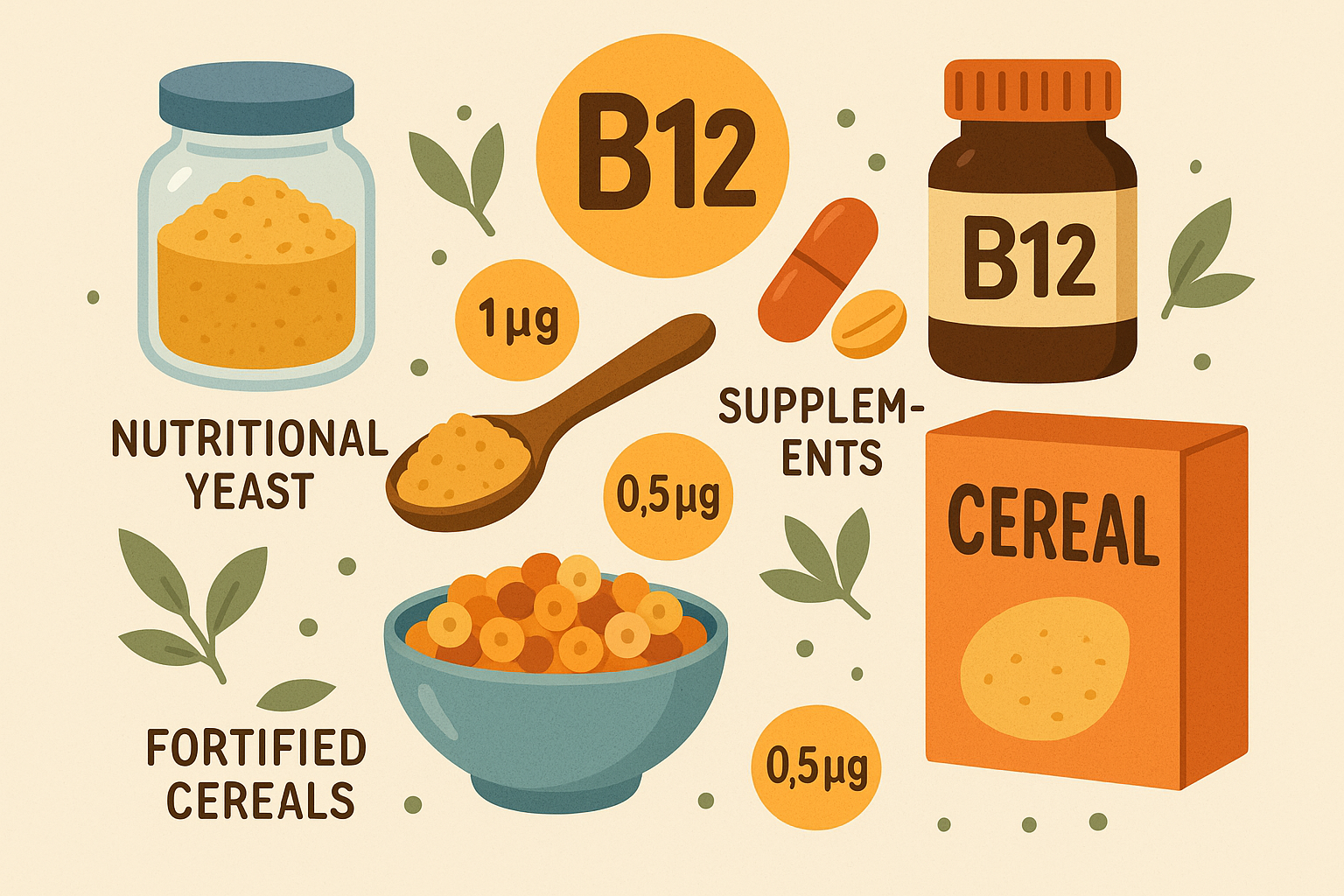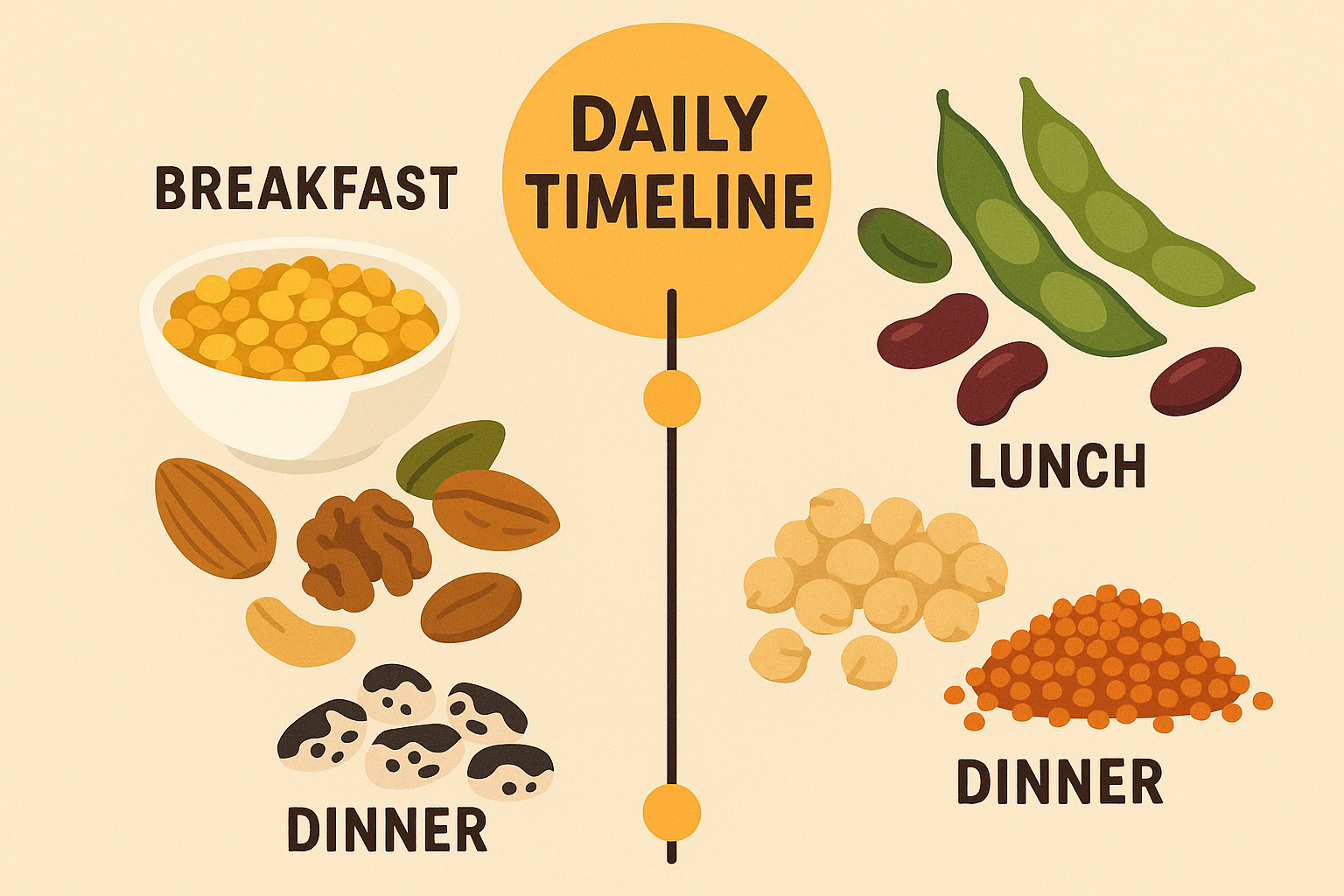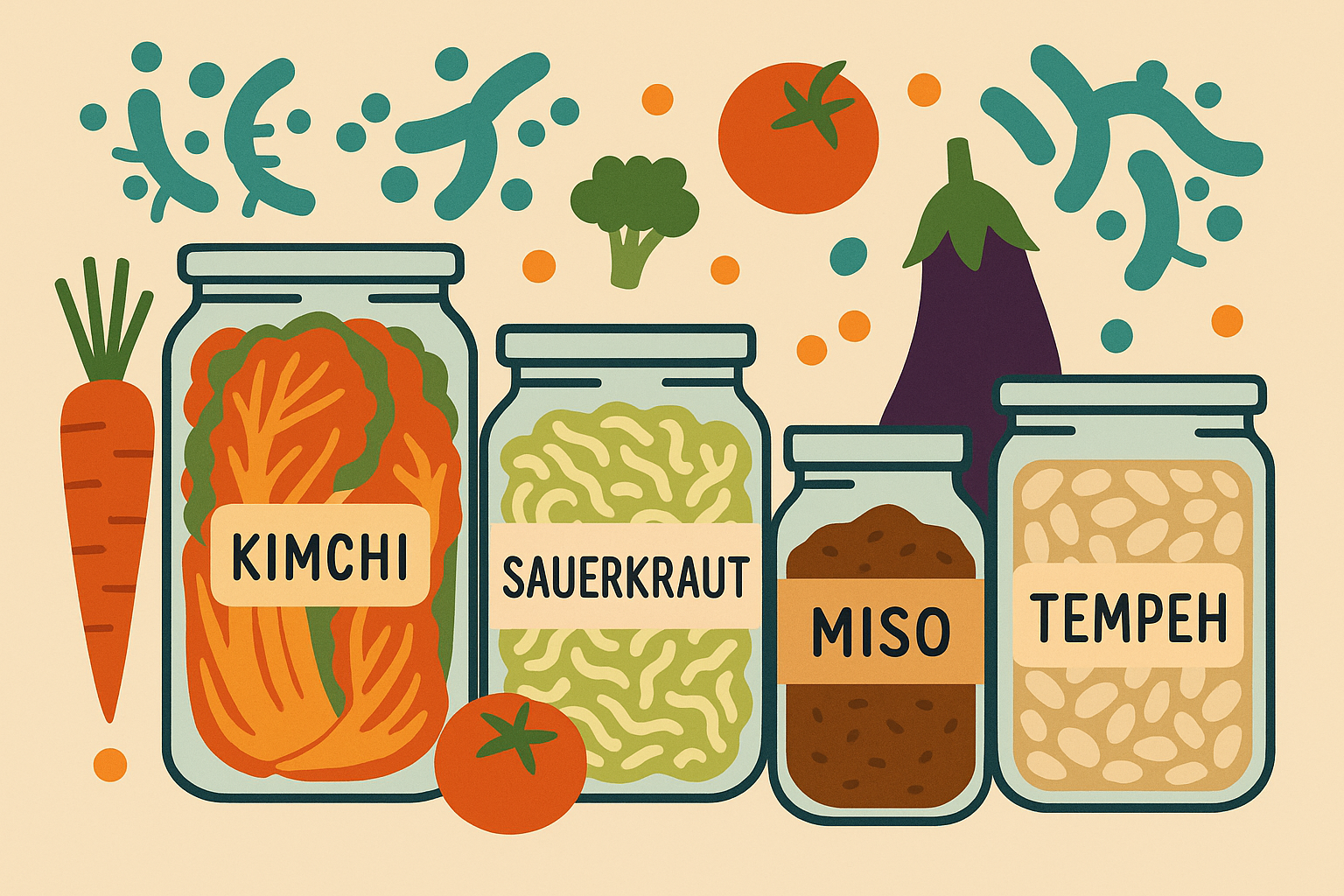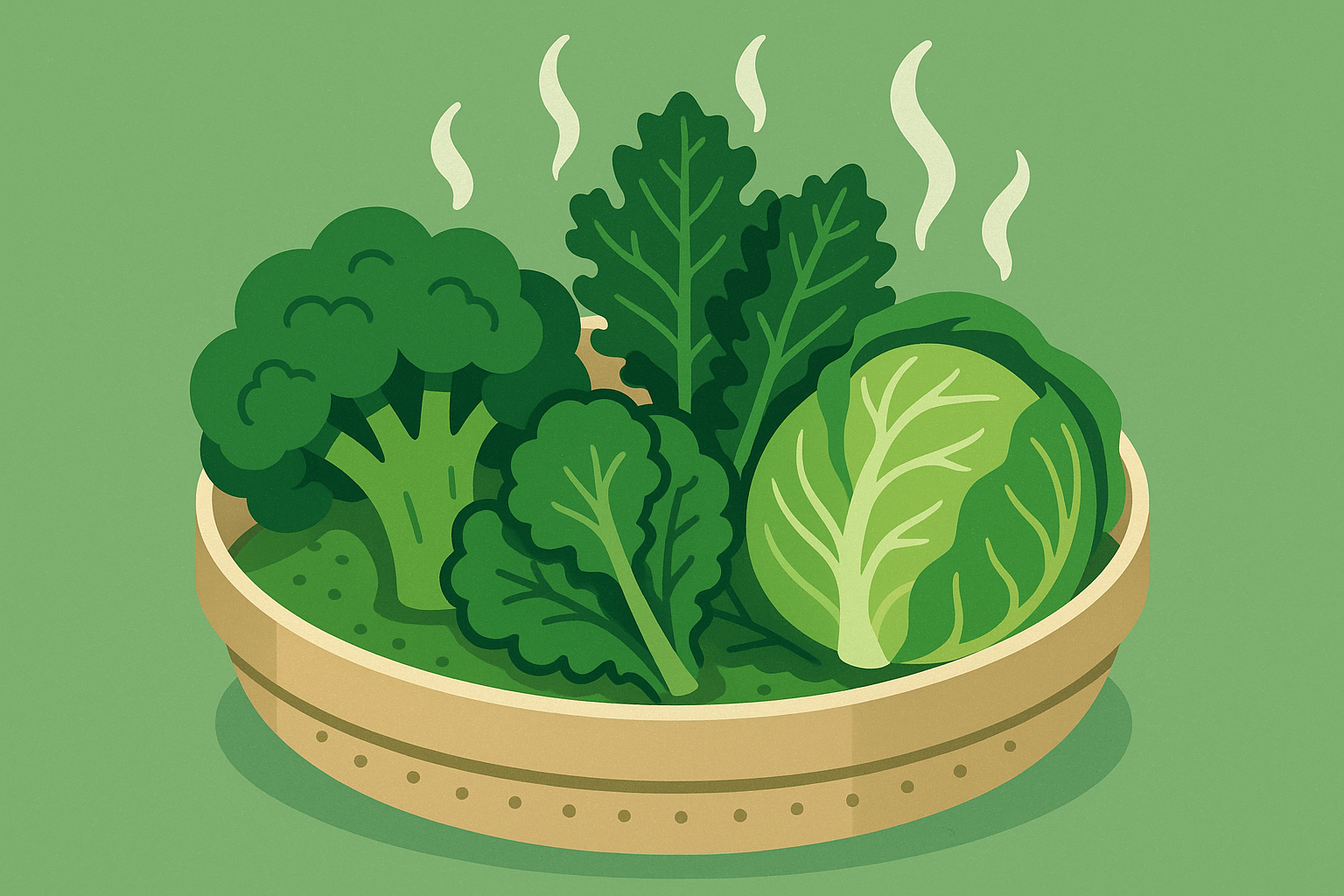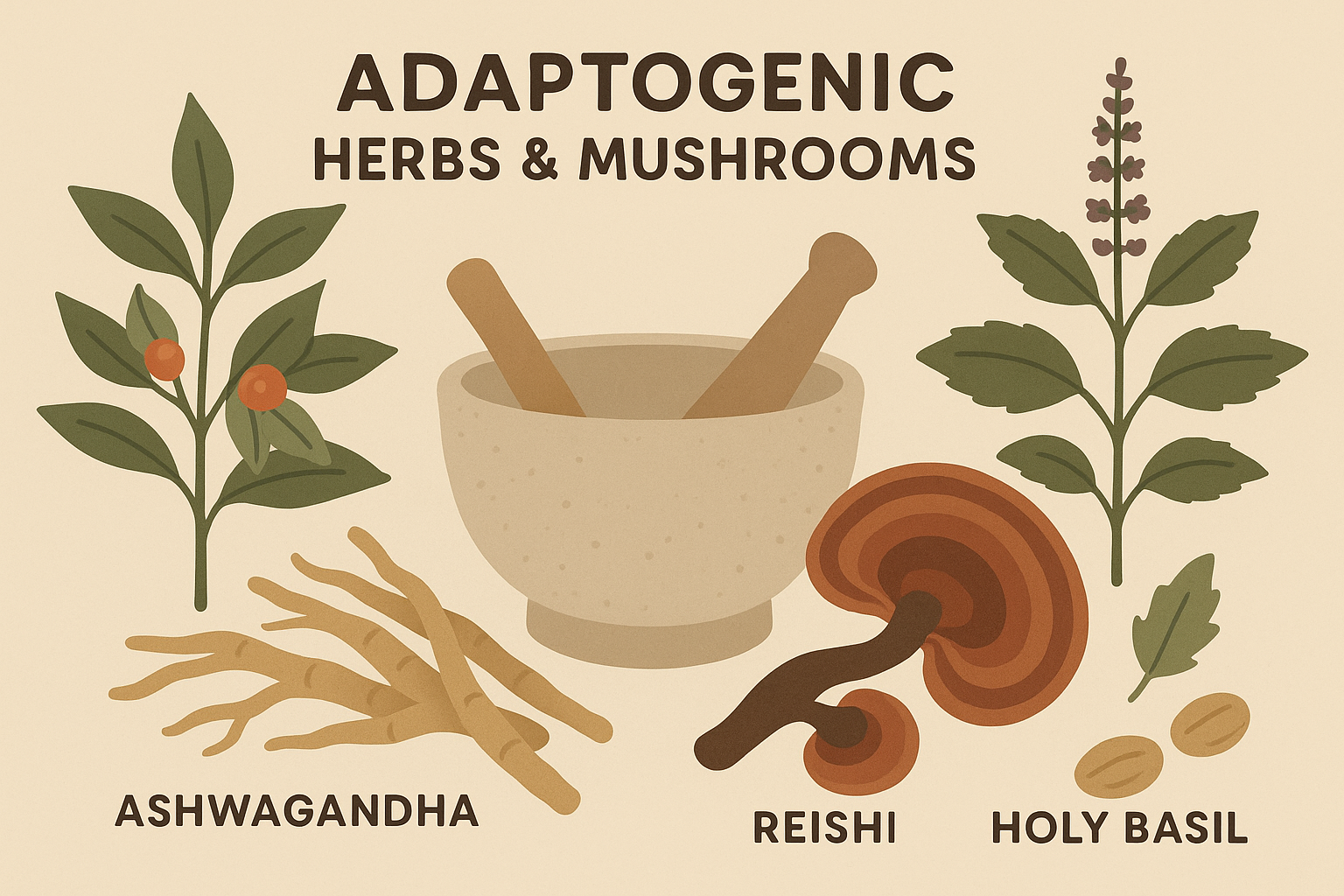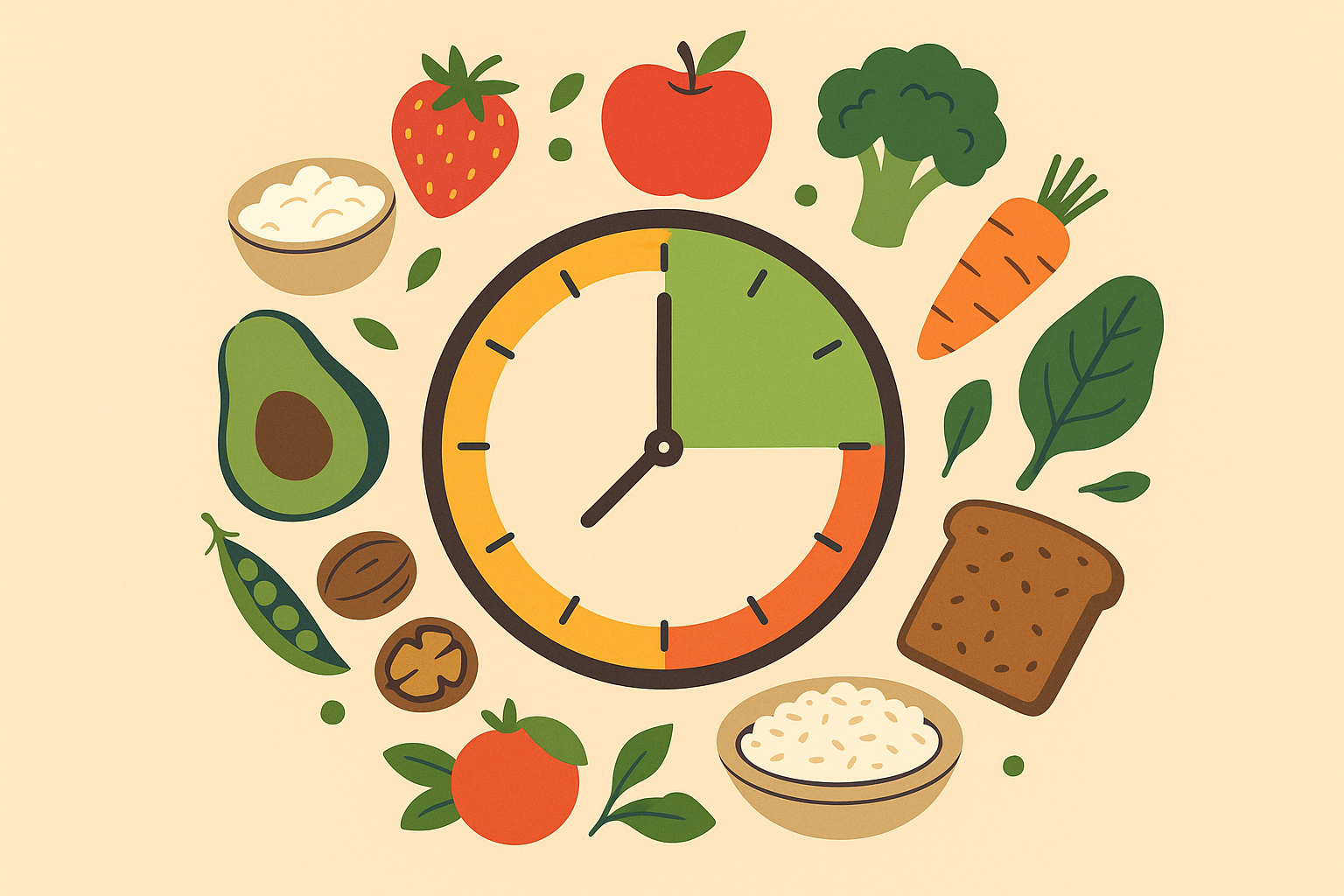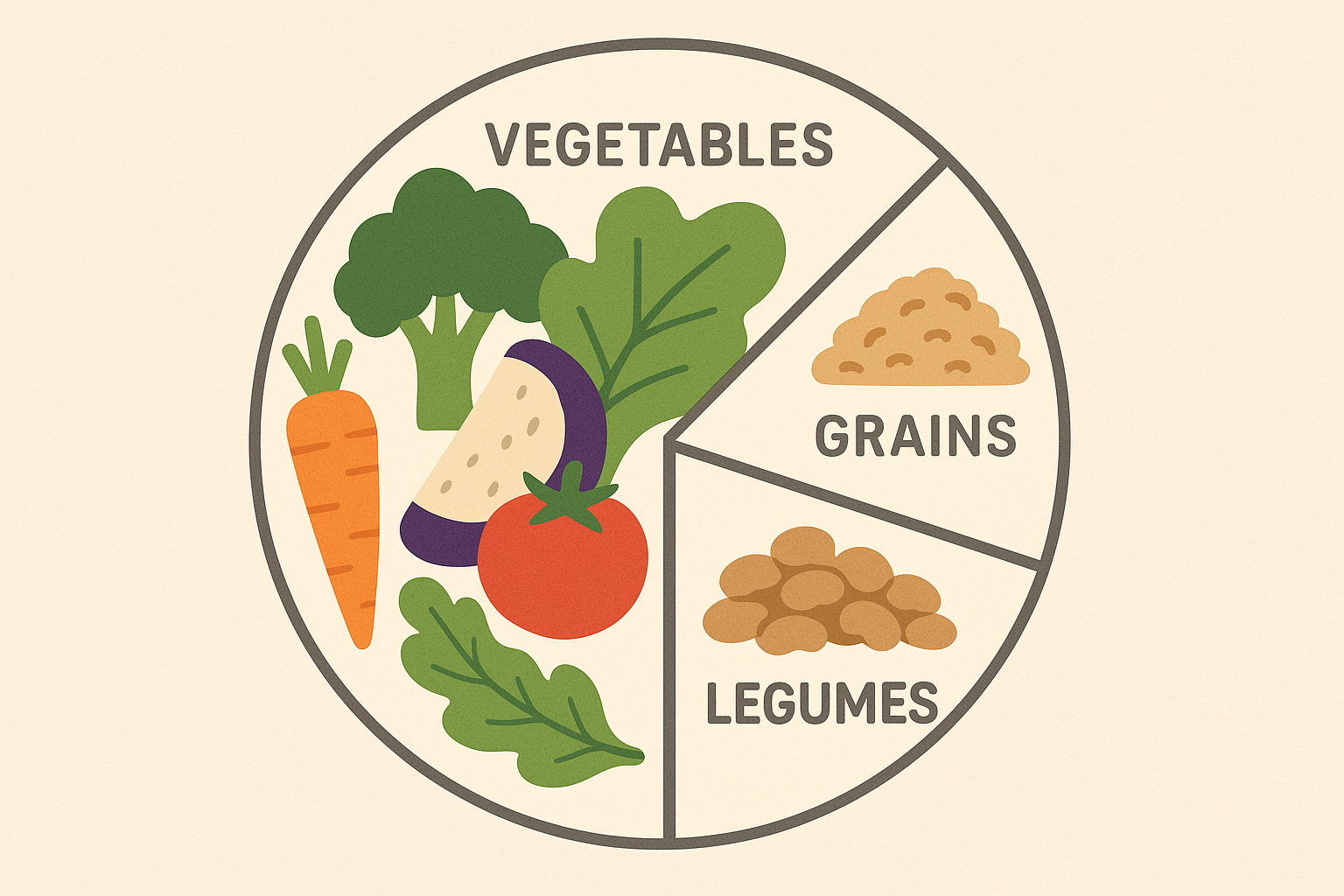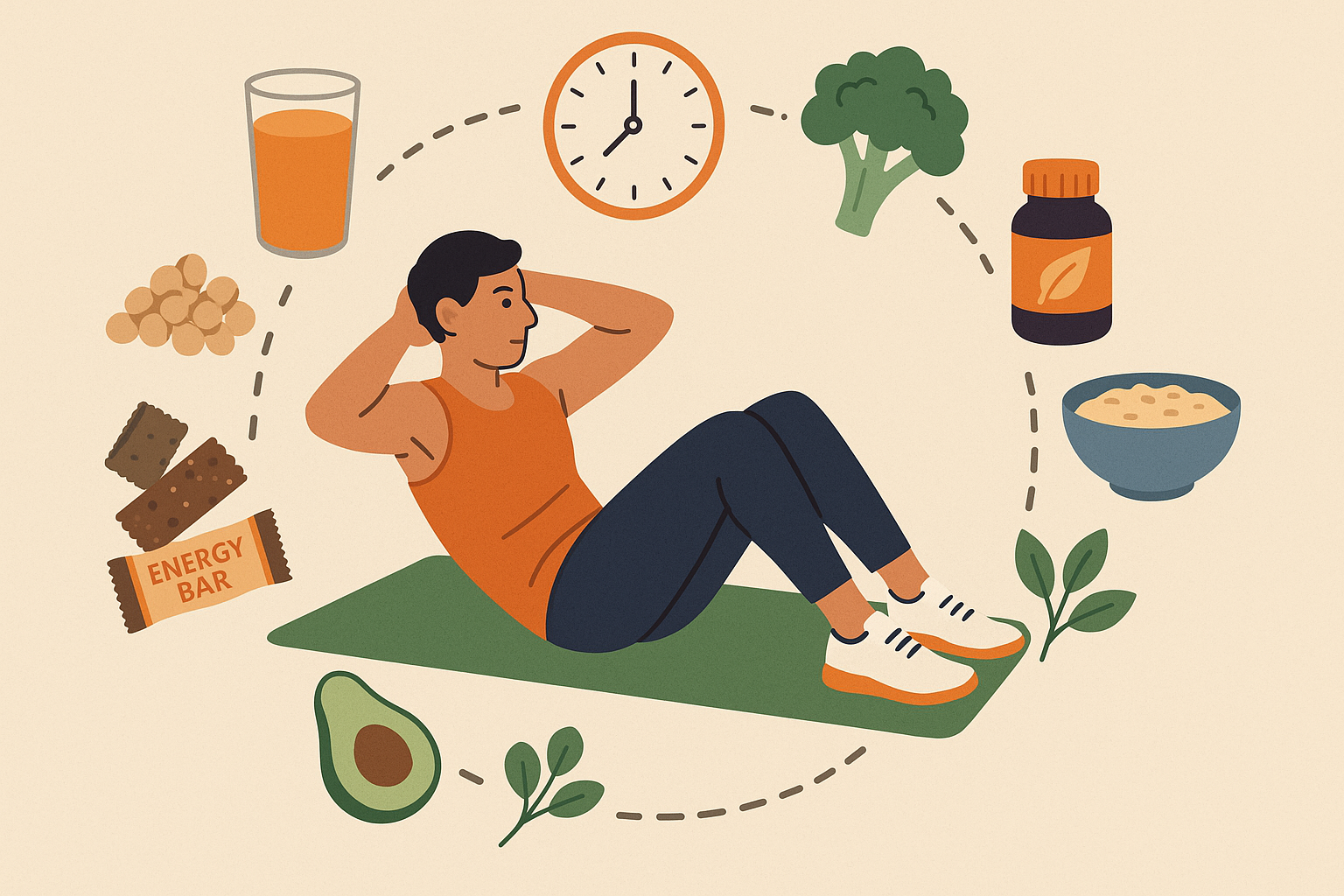Your 7-Day Vegetarian Meal Plan Just Got Some Simple Science-Backed Tips (And They’re Easier Than You Think)

Table of Contents
- Why When You Eat Matters More Than What You Count
- The Real Secret to Plant-Based Energy That Actually Lasts
- How to Support Your Hormones Naturally With Smart Meal Timing
- The Weight Loss Approach That Actually Sticks
- Final Thoughts
TL;DR
- Your body has natural rhythms for digesting food – working with them instead of against them can make your plant-based meals way more effective
- Some vitamins actually compete with each other, so spacing out iron and zinc-rich meals by a few hours helps you actually absorb them
- Mixing up your carb intake throughout the week teaches your body to burn different types of fuel efficiently
- Raw broccoli and kale can mess with your thyroid if you eat tons of it – but a quick steam fixes this while keeping all the good stuff
- Starting meals with bitter greens and including healthy fats helps your brain remember what “full” feels like again
- Loading up on high-volume, low-calorie plant foods naturally controls portions without you having to think about it
Why When You Eat Matters More Than What You Count
I used to think vegetarian meal planning was just about swapping chicken for chickpeas. Turns out, I was completely missing the point. Your body processes plant nutrients totally differently throughout the day, and once I figured this out, my energy levels went from those brutal afternoon crashes to steady fuel that lasted until bedtime.
Most people approach their 7-day vegetarian meal plan by focusing on what they’re giving up rather than optimizing what they’re adding. Here’s the thing – your digestive system operates on predictable biological rhythms that have nothing to do with your work schedule or when your friends want to grab dinner. When you align your plant-based eating with these natural cycles, you’re working with your biology instead of fighting against it.
According to Berry Street’s registered dietitians, 95% of patients pay $0 out of pocket when they see a dietitian with Berry Street, making professional guidance for optimizing your vegetarian meal timing more accessible than ever. This kind of personalized support can make the difference between guessing at meal timing and actually understanding how your individual metabolism responds to different plant foods throughout the day.
Morning Is Your Protein Power Hour
Between 6-8 AM, your digestive system is basically primed for maximum protein absorption. I discovered this the hard way after months of wondering why my protein-packed smoothies left me hungry an hour later. This narrow window is when combining different plant proteins creates the most noticeable energy improvements throughout your day.
Your body’s natural morning hormone surge actually helps with protein building. When you’re planning your 7-day vegetarian meal plan, this becomes your secret weapon for building and maintaining muscle on plants – and trust me, it’s way easier than I thought it would be.
Getting Your Plant Proteins to Actually Work
Pre-soaking quinoa the night before cuts cooking time and helps your body absorb more nutrients by breaking down some compounds that can block absorption. I started doing this religiously after realizing I was basically eating expensive bird food that my body couldn’t properly use.
Blending hemp hearts directly into smoothies gives you immediate access to complete proteins. These little seeds contain all the essential building blocks your body needs in ratios that actually make sense. Here’s a simple test – track your energy 2-3 hours after eating. If you’re still going strong, you’ve hit your sweet spot.
For those following a structured approach, learning how to cook delicious oatmeal every time provides another excellent morning protein foundation when combined with hemp hearts and almond butter.
Start with this morning combination that actually works: 1/2 cup pre-soaked quinoa (or regular if you forgot – life happens) cooked in almond milk, topped with 2 tablespoons hemp hearts and 1 tablespoon almond butter. It’s not Instagram-pretty, but it provides all the essential proteins while working with your body’s natural morning absorption peak.
Afternoon Carb Loading (Done Right)
Here’s something cool I learned – your body is basically designed to handle carbs best around lunchtime. Between noon and 3 PM, your insulin sensitivity peaks, which means your body can actually handle those sweet potatoes and dates without sending your blood sugar on a roller coaster ride. I used to avoid these foods completely, thinking they were “bad” carbs. Turns out, timing is everything.
Why Lunch Should Be Your Biggest Meal
Try to schedule your largest meal during this window when your body can best handle it, but don’t go crazy with portion sizes. Combining starchy vegetables with healthy fats helps moderate your blood sugar response. I know this might sound nerdy, but I tried one of those blood sugar monitors for a couple weeks (you can get them at the pharmacy now). What I learned totally changed how I think about timing my meals.
If you’re curious about your personal patterns, using a continuous glucose monitor for two weeks will show you exactly how different food combinations affect your body better than any generic advice.
| Smart Lunch Timing Strategy | |
|---|---|
| 12:00-1:00 PM | Best window for your biggest meal |
| Starchy Carbs | Sweet potatoes, quinoa, brown rice (about 3/4 cup cooked) |
| Healthy Fats | Avocado, tahini, olive oil (a good drizzle) |
| Plant Proteins | Lentils, chickpeas, tempeh (about 1/2 cup) |
| Fiber Buffer | Non-starchy vegetables (as much as you want) |
Evening Digestion Slowdown Strategy
After 6 PM, your digestive system naturally starts slowing down. This isn’t the time for heavy proteins or complex meals – your body simply can’t process them as efficiently. I learned this after too many nights of tossing and turning after late dinners, wondering why I felt so restless.
Dinner Without the Food Coma
Try adding digestive enzymes or fermented foods with dinner to support your slowing system. Choose lighter proteins like lentil soups or miso-based dishes. The golden rule I try to follow: finish eating three hours before sleep. This single change dramatically improved my sleep quality and next-day energy – though I’ll be honest, I probably nail this about 70% of the time, and that’s been enough to notice a real difference.
Understanding 5 simple ways to beat bloat and improve digestion becomes especially helpful when transitioning to plant-based evening meals.
The Vitamin Competition You Didn’t Know About
Iron and zinc compete for the same transport systems in your digestive system. When you eat them together, you’re basically forcing them to fight for absorption, and both lose. I had no clue this was happening until my blood work showed I was deficient in both minerals despite eating plenty of iron and zinc-rich foods. Talk about frustrating.
Timing Your Minerals for Better Absorption
Try to separate iron-rich meals from zinc-heavy foods by 2-3 hours when you can. Combine vitamin C sources with iron meals – this can actually triple how much you absorb. I started paying attention to my energy levels and how my nails looked instead of obsessing over blood work every few months.
Simple Mineral Timing Guide:
- ☐ Iron-rich breakfast (spinach smoothie with orange or berries)
- ☐ Wait about 3 hours before zinc-rich snack
- ☐ Zinc-focused lunch (cashews, chickpeas, pumpkin seeds)
- ☐ Wait a couple hours before iron-rich dinner
- ☐ Pay attention to how you feel – are you less tired? Do your nails look healthier?
The B12 Thing That Nobody Tells You
Your body can only absorb about 10mcg of B12 at once due to how your digestive system works. Those weekly mega-doses you’re taking? Most of it’s literally going straight through you. I was taking 1000mcg once a week and still showing low B12 levels on blood tests – so annoying.
Split B12 into daily smaller doses instead – around 10mcg works well. Try to include nutritional yeast in a few meals throughout the week, and consider the kind that dissolves under your tongue for better absorption. The difference in my energy levels was noticeable within about three weeks of making this switch.
The Real Secret to Plant-Based Energy That Actually Lasts
The difference between people who thrive on plant-based diets and those who struggle with energy crashes comes down to metabolic flexibility – basically, your body’s ability to switch between different fuel sources efficiently. Training this flexibility through mixing up your plant foods creates way better energy stability without the constant hunger that derails most attempts at eating better.
Carb Cycling That Actually Makes Sense
Your metabolism adapts to whatever you consistently feed it. This is why eating the exact same thing every day eventually stops working as well. I noticed this happening around month three of my plant-based journey – what used to give me energy started leaving me sluggish and kind of blah.
Here’s what I actually do instead of following some complicated plan: Two days a week I eat more sweet potatoes, oats, and quinoa. Two days I go easier on the carbs and load up on nuts, seeds, and salads. The other three days I just eat normally. That’s it. Research from Noom’s dietary analysis shows that calculating your protein needs using the formula “Your weight (lbs) x 0.36 = grams of protein daily” ensures you’re getting enough to maintain muscle during vegetarian weight loss phases.
The Weekly Carb Strategy That Works
Aim for two higher-carb days focusing on whole grains and starchy vegetables. Include three moderate-carb days emphasizing non-starchy vegetables and legumes. Try two lower-carb days featuring nuts, seeds, and leafy greens.
You can track this with urine strips if you want to see the numbers change, but honestly, you’ll know it’s working when you stop getting that 3pm energy crash and start sleeping better.
| Simple 7-Day Approach | ||
|---|---|---|
| Day | Carb Focus | What This Looks Like |
| Monday | Higher | Oatmeal, sweet potato, quinoa |
| Tuesday | Moderate | Lentils, chickpeas, lots of veggies |
| Wednesday | Lower | Nuts, seeds, salads, avocado |
| Thursday | Moderate | Black beans, brown rice, vegetables |
| Friday | Higher | Whole grain pasta, winter squash |
| Saturday | Lower | Hemp seeds, spinach, nuts |
| Sunday | Moderate | Tempeh, vegetables, small amount quinoa |
Protein Distribution That Actually Builds Muscle
Your body can only use about 25g of protein for muscle building at once, regardless of how much you eat. I used to load up on protein at dinner and wonder why I wasn’t seeing any muscle gains despite hitting my daily protein targets.
Spreading plant protein across several smaller meals throughout the day works way better. Try to get 15-25g plant protein every 3-4 hours, and mix different protein sources throughout the day – they don’t need to be in the same meal, which makes life a lot easier.
Your Gut Bacteria Are Running the Show
Your gut bacteria directly influence how well you absorb nutrients, your inflammation levels, and even what you crave. Different beneficial bacteria thrive on different types of fiber, so rotating your fiber sources helps maintain a healthy gut ecosystem.
Athletes are increasingly turning to plant-based nutrition for performance benefits. According to Triathlete Magazine’s meal planning guide, endurance athletes are discovering that “filling you up with large portions of seasonal produce, making that at least half your plate in most cases” provides sustained energy for training.
The Simple Fiber Rotation System
Try to include 3-4 different fiber sources daily: things like garlic, onions, asparagus, bananas, apples. Mix up your fiber types throughout the week between different vegetables and fruits. Pay attention to your digestive symptoms and energy levels – this tells you way more about what works for your system than any generic recommendation.
I started keeping a simple food and energy journal, just rating my energy from 1-10 throughout the day. The patterns that emerged helped me figure out which fiber combinations worked best for my body.
Weekly Fiber
Weekly Fiber Rotation That’s Actually Doable:
- Monday-Tuesday: Asparagus, garlic in cooking
- Wednesday-Thursday: Onions, green bananas, apples
- Friday-Saturday: Oats, ground flaxseed, berries
- Sunday: Easier day with gentler fibers (cooked vegetables)
Living Foods for Better Gut Health
Fermented foods provide beneficial bacteria while supplying unique nutrients like vitamin K2. Try to include one serving daily: kimchi, sauerkraut, miso, tempeh, or kefir. Mix up the types throughout the week to get different bacterial strains.
Making homemade fermented vegetables lets you control the salt content while getting maximum benefits. I started with simple sauerkraut and now have a few different ferments going at any given time – it’s become kind of addictive in the best way.
For those interested in the gut health connection, exploring whether drinking vinegars are the next big thing for gut health can complement your fermented food rotation strategy.
How to Support Your Hormones Naturally With Smart Meal Timing
Certain plant compounds can either support or mess with your hormone production depending on how and when you eat them. Understanding these interactions helps you design meals that support thyroid function, stress response, and metabolic health throughout your week – without making it complicated.
Protecting Your Thyroid on Plants
Plant-based diets get unfairly blamed for thyroid issues, but the real problem is usually how and when you prepare certain foods. I’ve seen too many people abandon plant-based eating because they developed thyroid symptoms that could have been easily prevented with some simple tweaks.
Raw broccoli, kale, and other cruciferous vegetables contain compounds that can interfere with thyroid function when you eat large amounts raw, but proper preparation fixes this while keeping all the cancer-fighting benefits.
The Simple Cruciferous Vegetable Fix
Steam or lightly cook cruciferous vegetables rather than eating them raw all the time. Limit raw cruciferous intake to 1-2 servings per day when possible. Make sure you’re getting adequate iodine through seaweed or iodized salt. If you’re eating tons of cruciferous vegetables, it’s worth checking your thyroid function every six months – better safe than sorry.
Transform those raw kale salads into lightly steamed kale with lemon and olive oil. Just steam for 2-3 minutes to reduce the problematic compounds while keeping the nutrients. Add a pinch of iodized sea salt and some dulse flakes for thyroid-supporting iodine.
Selenium and Zinc for Thyroid Health
These trace minerals are essential for converting your thyroid hormones into their active forms. Include 2-3 Brazil nuts daily for selenium – don’t go overboard because too much selenium can actually be toxic and make you feel pretty awful.
Soak and sprout pumpkin seeds to increase how much zinc your body can actually use. Combine zinc-rich foods with protein sources for better absorption. I learned this after my doctor explained why my zinc levels weren’t improving despite eating plenty of pumpkin seeds – turns out preparation matters a lot.
Taming Your Stress Response Naturally
Chronic stress hormone elevation messes with your metabolism, sleep, and appetite regulation. Adaptogenic herbs and mushrooms help regulate your body’s stress response system, supporting more balanced stress hormone production throughout daily ups and downs.
Smart Adaptogen Integration
Try adding ashwagandha powder to morning smoothies (300-500mg) to support daytime stress resilience. Add reishi mushroom powder to evening herbal teas for better sleep quality. Include holy basil tea during particularly stressful periods – it’s surprisingly calming.
Cycle adaptogens monthly to prevent your body from getting too used to them – your system adapts to everything eventually. I rotate between different adaptogens every 4-6 weeks to maintain their effectiveness, though honestly, sometimes I forget and just use whatever I have on hand.
The Weight Loss Approach That Actually Sticks
Sustainable weight loss happens through helping your metabolism work better, not just restricting calories and hoping for the best. Using plant-based nutrition to optimize hormone signaling, improve how your body handles carbs, and enhance cellular energy production creates lasting changes that don’t require constant willpower.
The CDC recommends a loss of 1-2 pounds per week, or a deficit of 500-1,000 calories per day achieved through changes in eating habits and exercise for sustainable vegetarian weight loss. However, focusing solely on caloric deficits misses the bigger picture of how your 7-day diet plan for weight loss can actually help reprogram your metabolism.
Fixing Your Brain’s “I’m Full” Signals
When your brain stops getting the “I’m full” signal properly, you end up overeating despite having plenty of energy stored. I struggled with this for years before understanding that inflammation was basically blocking my satiety signals – so frustrating when you’re trying to eat well but never feel satisfied.
Plant-based approaches can restore these signals through specific nutrient timing and anti-inflammatory strategies. The key is addressing the root cause rather than just restricting calories and crossing your fingers.
The Anti-Inflammatory Meal Sequence
Chronic inflammation blocks the pathways that tell your brain you’ve had enough food. Begin each meal with bitter greens like arugula or dandelion to stimulate your digestive enzymes. Include omega-3 rich foods with every meal – chia seeds, walnuts, or algae oil work well and are easy to add to most dishes.
Try eliminating processed foods and refined sugars for 21 days to reset these inflammatory pathways. Track your hunger and how satisfied you feel on a 1-10 scale throughout this period. Watching these numbers improve provides incredible motivation to stick with it – and honestly, you’ll probably start feeling the difference within the first week.
21-Day Reset Approach:
- ☐ Start each meal with bitter greens (even just a handful of arugula)
- ☐ Include omega-3 source at every meal (doesn’t have to be fancy)
- ☐ Cut out processed foods completely (this is the hard part, but it’s temporary)
- ☐ Track daily hunger/satisfaction levels (1-10 scale)
- ☐ Pay attention to energy levels and sleep quality
- ☐ Measure waist circumference weekly (sometimes more telling than the scale)
Professional athletes are embracing plant-based meal timing strategies. Triathlete Magazine’s nutrition guide emphasizes that “train in the morning? A hearty breakfast ensures you use those necessary calories to fuel your effort. A post-workout snack is integral for recovery and satiating hunger.”
Intermittent Fasting Integration
Strategic meal timing windows can enhance how well your brain recognizes fullness signals while preserving muscle mass and energy levels. Try a 14-16 hour fasting window 3-4 days per week when it fits your schedule. Break fasts with protein-rich plant foods to maintain stable blood sugar.
Make sure you’re eating enough during your eating windows – if you restrict calories too severely, your metabolism will slow down and defeat the purpose. I made this mistake early on, being too restrictive during my eating windows and wondering why my energy crashed.
For those considering intermittent fasting approaches, understanding how women should approach intermittent fasting provides crucial guidance for hormone-safe implementation.
Natural Portion Control Through Plant Volume
High-volume, low-calorie plant foods naturally reduce how many calories you’re eating while maximizing the signals that tell you you’re satisfied. When you structure this right, it becomes nearly impossible to overeat without really trying.
The Volume Advantage
Fill half your plate with non-starchy vegetables before adding other stuff. Start meals with broth-based vegetable soups to activate the stretch receptors in your stomach that signal fullness. Include water-rich foods in every meal – cucumbers, tomatoes, and zucchini are excellent and easy to add to most dishes.
Try to chew each bite 20-30 times. This gives your satiety hormones time to kick in and prevents the mindless eating that sabotages weight loss efforts. I know it sounds tedious, but it becomes automatic pretty quickly.
Create a “volume-first” dinner plate: Start with 2 cups mixed greens and raw vegetables, add 1 cup roasted non-starchy vegetables, then include about 3/4 cup quinoa and 1/2 cup black beans. This structure naturally controls portions while maximizing nutrients and satisfaction.
Protein Priority in Action
Your body will keep seeking food until it gets enough protein. Calculate roughly how much protein you need (about 0.8-1.2g per kg body weight for weight loss). Try to prioritize protein at each meal before adding fats and carbohydrates.
Use protein-rich snacks like roasted chickpeas or hemp seeds between meals if needed. I found that hitting my protein targets early in the day dramatically reduced those evening cravings that used to derail my efforts.
Training Your Body to Burn Stored Fat
Metabolic flexibility allows efficient fat burning while maintaining stable energy on plant foods. This requires some specific strategies for mixing up your macronutrients and meal timing that gradually teach your body to access stored fat for energy.
Fat Adaptation Without Extreme Restriction
Extend the time between breakfast and lunch by 30 minutes each week – gradual changes stick way better than dramatic shifts. Include MCT oil or coconut oil to support your body’s ability to make ketones during fasting periods.
Pay attention to your energy levels and mental clarity to make sure you’re adapting well. Breath ketone meters track metabolic flexibility improvements better than urine strips, though they’re more expensive – but honestly, how you feel is probably the best indicator.
Exercise Timing for Better Fat Burning
Try to schedule moderate cardio during your longest fasting window for enhanced fat burning. Time strength training 1-2 hours after protein-rich meals for optimal performance. Include post-workout plant protein within 30 minutes of resistance training when possible.
Track body composition monthly rather than obsessing over scale weight – the numbers tell a much better story about what’s actually happening in your body. Sometimes the scale doesn’t move but your clothes fit better and you have way more energy.
Gradual Fat Adaptation Schedule:
- Week 1-2: 12-hour eating window (8am-8pm) – ease into it
- Week 3-4: 10-hour eating window (9am-7pm) – see how you feel
- Week 5-6: 8-hour eating window (10am-6pm) – if it feels good
- Week 7+: Flexible 8-10 hour windows based on your energy levels and life
Final Thoughts
Transforming your 7-day vegetarian meal plan from basic substitution into something that actually optimizes how your body works doesn’t require perfection – it just requires understanding a few key principles. Your body operates on predictable rhythms and responds to specific nutrient combinations in measurable ways. When you align your plant-based eating with these biological realities, sustainable weight loss and lasting energy become natural results rather than constant struggles.
The strategies I’ve shared aren’t just theoretical – they’re based on how your digestive system, hormones, and metabolism actually function. Don’t try to do everything at once (I learned that the hard way). Start with one or two concepts that resonate most with your current challenges. Maybe that’s timing your protein intake around your morning absorption window, or perhaps it’s trying the anti-inflammatory meal sequencing to help restore your satiety signals.
Look, I’m not gonna lie – the first week of paying attention to meal timing felt like a lot of work. But remember, metabolic flexibility takes time to develop. Your body has been operating on its current patterns for years, so give these changes at least 3-4 weeks to show measurable results. Track your energy levels, sleep quality, and hunger patterns – these will guide your optimization better than any generic meal plan ever could.
Some days you’ll nail it, others you won’t – that’s completely normal. I probably follow this “perfectly” about 70% of the time, and that’s been enough to see real changes. Progress isn’t always linear, and that’s okay. You’ve got this – start where you are and build from there.

